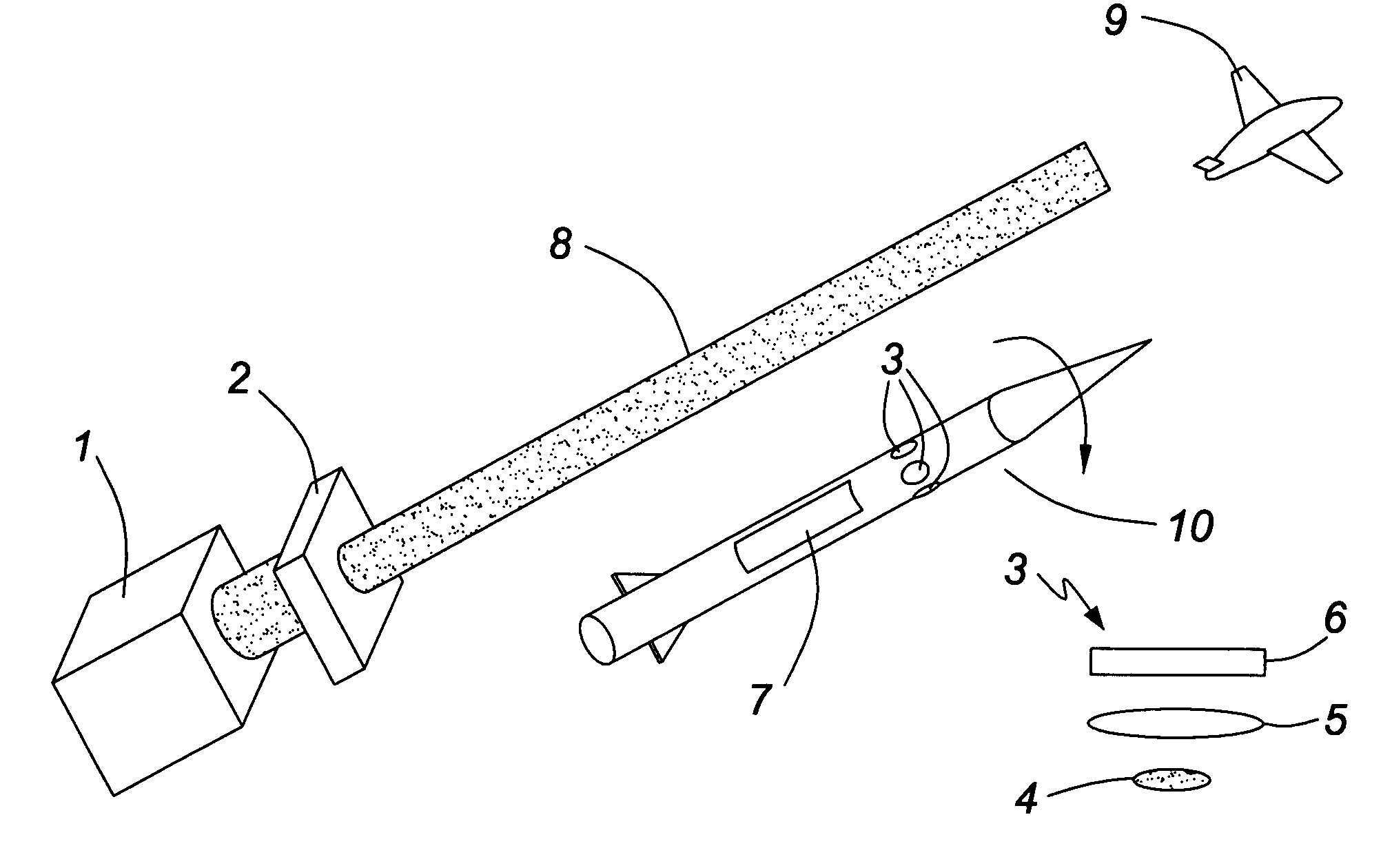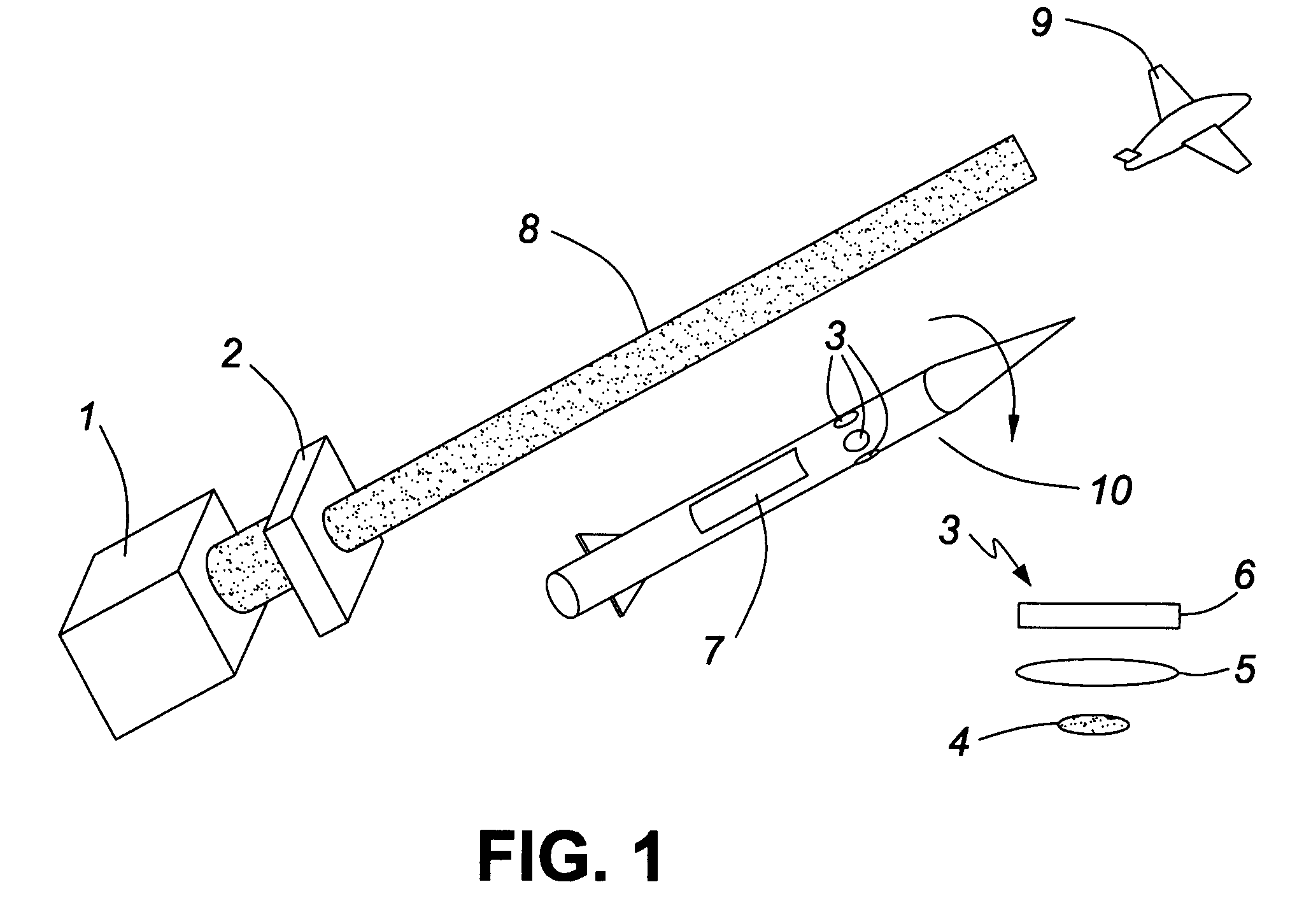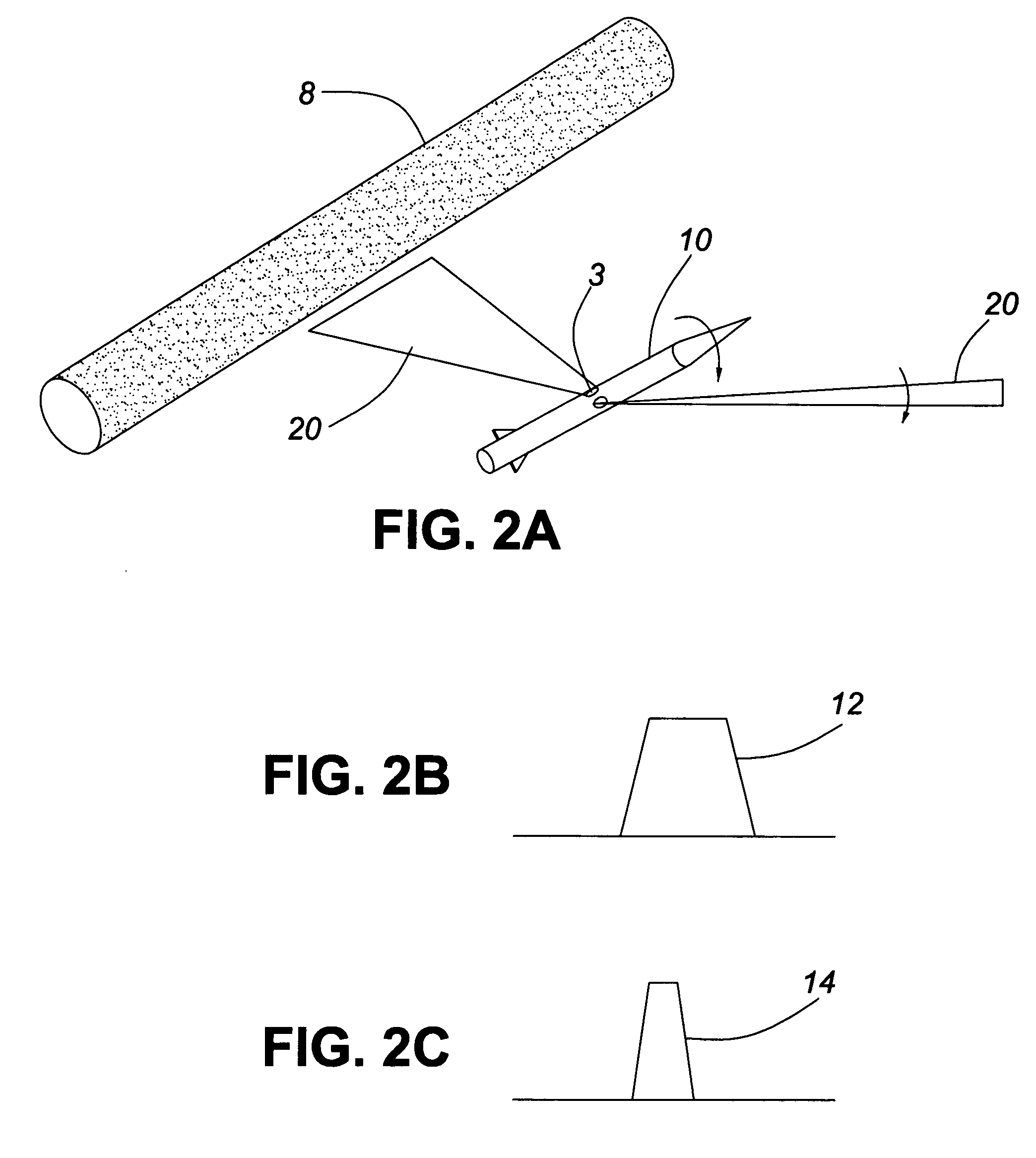Beam laser atmospheric scattering trajectory guidance
a beam laser and atmospheric scattering technology, applied in the direction of direction controllers, weapons, weapons types, etc., can solve the problems of high cost of precision, high cost of seeker components such as gimbals, domes, high-performance electronics and software, etc., and achieve the effect of less costly implementation
- Summary
- Abstract
- Description
- Claims
- Application Information
AI Technical Summary
Benefits of technology
Problems solved by technology
Method used
Image
Examples
Embodiment Construction
[0018]Precision guidance for missiles is a subject of high interest for all military organizations throughout the world. The required precision has high costs due, in great part, to the complexity of the guidance techniques generally used. Radar, RF, GPS, TV, IR or lasers are examples of technologies that have been used to meet the guidance precision requirements. The majority of the present approaches are based on terminal homing seekers. The problem with these approaches is the high costs associated with seeker components such as gimbals, domes, high performance electronics and software. Other techniques make use of a human in the loop to reduce the complexity and costs of the components installed aboard a missile. In these techniques, a human operator provides assistance to a missile's guidance system by correcting its trajectory through a data link such that a satisfactory trajectory of the missile to the target is achieved. This approach substantially reduces the costs of the g...
PUM
 Login to View More
Login to View More Abstract
Description
Claims
Application Information
 Login to View More
Login to View More - R&D
- Intellectual Property
- Life Sciences
- Materials
- Tech Scout
- Unparalleled Data Quality
- Higher Quality Content
- 60% Fewer Hallucinations
Browse by: Latest US Patents, China's latest patents, Technical Efficacy Thesaurus, Application Domain, Technology Topic, Popular Technical Reports.
© 2025 PatSnap. All rights reserved.Legal|Privacy policy|Modern Slavery Act Transparency Statement|Sitemap|About US| Contact US: help@patsnap.com



